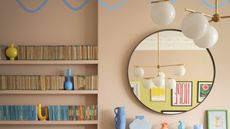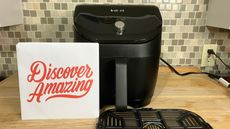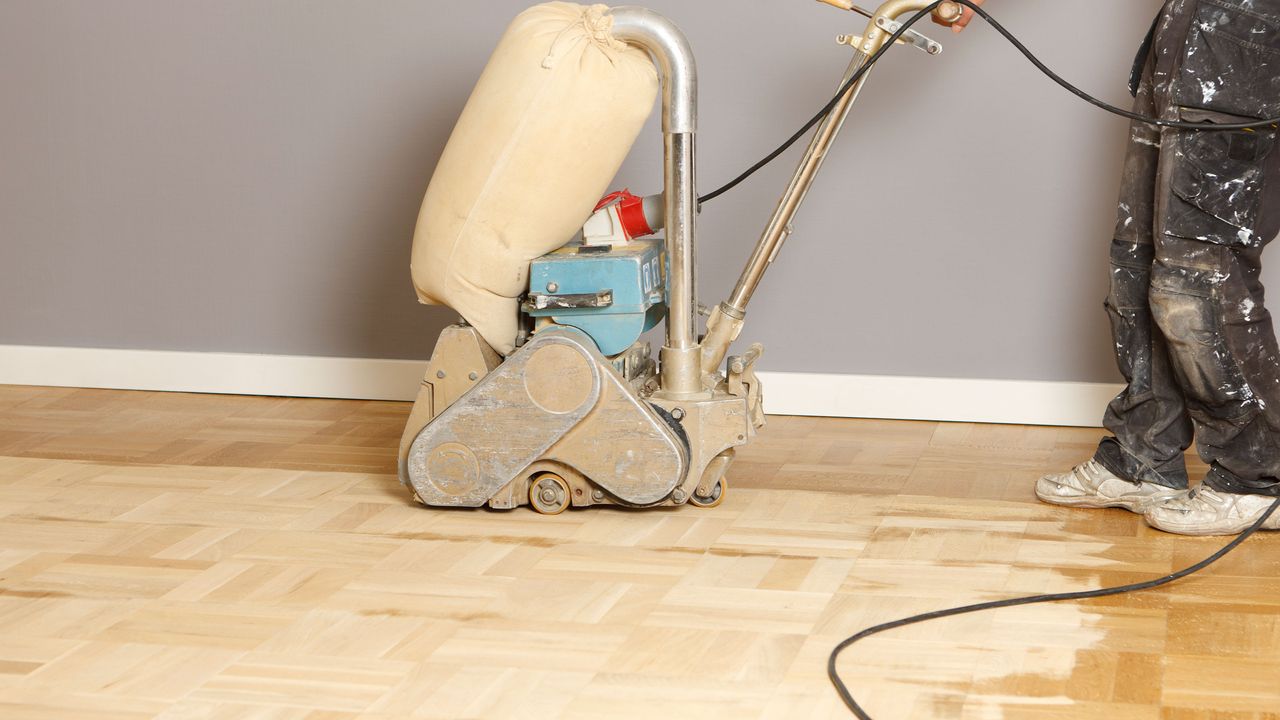
Christina Chrysostomou
Wood flooring in rough shape? Before you call the pros to refinish hardwood floors, it's good to know that you can DIY this job with a handful of rentable tools.
Strip hardwood is one of the most popular types of flooring – and for good reason. Most often found in straight lines, these boards offer a nearly endless array of options when you combine species, board widths, stains, and finishes. Few flooring options give you the ability to go from crisp, clean, and modern to warm, rustic and country-like wood flooring.
Beyond aesthetics, wood is way easier to keep clean compared to carpet, plus softer on your back than stone or tile. But hardwood's biggest appeal might be the thing homeowners dread thinking about most: refinishing it by sanding, a process that will restore wood floors to their original beauty time and time again.
We take you through the steps to DIY this flooring job with a materials list to take to your local home improvement store (full list at bottom). Alternatively, many of this equipment can be shopped online at Amazon, making the project even more practical.
Refinish hardwood floors with ease
The finish on even the best types of wooden flooring is sacrificial and in time will need to be refinished to bring back that new floor shine. Modern, pre-finished hardwood flooring is coated at the factory and can look new for 10 to 30 years. But the coating on traditional flooring ideas that are site-finished won't last nearly as long. Grime, dirt, shoes, kids, and pets can beat up a floor's protective polyurethane finish and show signs of wear in just a few years. Left unprotected, the wood below will start to get damaged too.
Can I refinish wood floors myself?
The good news is that hiring a pro isn't your only option when it comes to adding luster back to those floors. If you're an experienced DIYer and not afraid of a few days of serious labor, you can save quite a bit by refinishing hardwood floors yourself.
The tools a professional flooring contractor would use are available through rental centers or the rental department at a large home center. Everything you need, from the finish on the floor to the respirators you'll want to wear while sanding, is easily found at most home centers.
Still, there are a few instances when you'll want to hire a pro when you're dealing with hardwood. If you want a stained floor, that can take some practice to get consistent results and avoid blotchiness. If you're planning to do the entire house, a professional crew will be faster and that's less of a disruption to your family – remember you can't be on the floor until about 24 hours after the final topcoat of polyurethane has cured.
If your floor is uneven, you'll want a pro's experience to level it out, and the same goes for complicated patterns like a chevron or large medallions. While water stains are easy to sand out, pet stains often penetrate the wood very deeply and can't always be sanded out. Consider having a pro replace the section of the floor under a pet stain before sanding.
'Refinishing a hardwood floor is something you can do yourself, especially if you are on a budget,' says Christian Roberts, flooring expert, MyJobQuote
'Most of the tools you require, from sanders to buffers, can be hired easily, so there’s no need to invest in tools you may only use once every six-twelve months. However, while doing so may save you money, you should set aside a weekend to get the work done and you must ensure you get the work done properly.'
Essential tool list
1. A drum sander: available to rent from Home Depot
2. An edging machine for where the drum can't reach: hire from Home Depot
3. A nylon pad for the edging machine: check with manufacturer for compatibility.
4. 60-grit sanding belt: POWERTEC proves its worth
5. Sandpaper: you'll need 60, 80, and 100 grit consider a bundle to save
Step 1: Protect your possessions, surroundings and yourself
First things first, you'll want to protect any fragile items and anything that could get dirty or damaged from this DIY job. Ideally, you'd remove all framed art, your wall-mounted TV and sofa out of the room. But, if this isn't possible, use a plastic or canvas drop cloth to cover it up as best you can. Remember: safety first, so old clothes and/or overalls are advised, along with some protective googles and a dust mask to save you from getting dust in your eyes, nose and mouth.
Step 2: Gather supplies and remove any molding
A newer version of a floor sander uses a series of random orbit sanders. It's more DIY-friendly, less aggressive, and does the job of the drum and edge sander, but it's much slower – more on that later.
You can rent all of these tools, and buy all the sandpaper they need – in 60, 80, and 100 grit– at your chose rental center / retailer. You'll need some hand tools like a scraper, sandpaper, and a nail set and hammer to sink any proud fasteners. You'll also need to buy the supplies to polyurethane the floor. (These are all listed in the full material list).
The traditional method of refinishing a floor relies on three key tools that you'll have to rent, which we've listed above in the equipment list.
- If your base molding has a shoe, remove it carefully with a prybar. You'll re-install it after the floor is finished. Leaving it in place means your molding gets beat up by the edger, leaving scuff marks that you'll have to touch up with paint after.
- Using your painter's tape, tape off doorways and any vents in the room to keep the dust confined to the space you're working in.
Step 3: Use the drum sander
- Ask the rental center for a demo of the machine and watch clips online on YouTube to learn how to raise and lower the drum and how to work the machine across the floor at a steady, even pace so you remove a consistent amount of wood.
- Generally, for the best results, you want to move the drum sander in the direction of the wood's grain, not perpendicular to it. Once the room and floor are clear and you've added a box fan for ventilation to an open window (so it pulls dust out of the room), you can start sanding.
- Begin with the 60-grit sanding belt and make at least two passes over the entire floor, sanding away about an 11-inch-wide swath each time.
- Empty the bag of sawdust when it swells or after each pass around the room and dispose of it carefully in your garbage can.
Step 3: Edge the walls
- When you rent a machine, ask for a nylon pad to slip between the motor and the 7-inch sandpaper disc. That acts like a shock absorber, which reduces the chance you'll gouge the floor and cause damage.
- Now, go around the room and sand any of the original flooring left by the drum sander. The goal is to remove the color and the finish and blend the seam where the edger and drum sander meet. You'll also need to sand spots the drum was too big to get, like your closets.
- Repeat the process until you've gone around the room twice with 60-grit paper. Change the sandpaper often if the finish isn't coming off and you find yourself forcing the machine.
- You'll notice the round edger disc leaves a crescent-shaped swath of flooring in the corners. Remove that by pulling a carbide hand scraper along the grain to flatten out the corners. You might need to do this after each round of sanding so the corners are as flat as the rest of the floor.
Step 4: Alternate between the drum and edger sanders again
- Suck the floor clean with a utility vacuum before moving onto the next grit.
- Repeat process with the remaining two grits: Make two passes with the drum sander fitted with 80-grit paper then two trips around the room with the edger and its 80-grit paper.
- Vacuum the floor, then move onto the 100-grit paper on both machines. After, check the corners and hand scrape as necessary to keep them flat.
- As you move to the next grit of paper, check for swirls or scratches in the floor you missed. Rest a flashlight on the floor so its beam casts across the wood.
- Any deep swirls left from the previous grit in the drum or the edger will be easier to spot. Check around the room. If you spot any, hand-sand them with 100-grit sandpaper, rubbing with the grain.
Step 5: Screen the floor
- Vacuum the floor again then wheel the drum and edger out of the room.
- Roll in the buffer, fitted with a 120-grit sanding screen. This screen's job is to blend the entire floor together so the drum and edger sander's marks are indistinguishable. It can take some getting used to when running the buffer; it's more of a dance than trying to muscle the machine so ask for tips when you rent it. Run the buffer over the entire room along the wood's grain, overlapping the previous course by a few boards.
- Once you're done buffing, leave the room and let the dust settle for about 15 minutes.
- It might be helpful to bring in a battery-powered or plug-in electric leaf blower to force the settled dust out of baseboard heat registers – with the room clear now is the time to clean and vacuum those too.
- If you had the window open to expel dust, close it now to avoid any debris blowing into the room and onto the finish.
- Vacuum the floor again.
Step 6: Prepare for the polyurethane finish
- Walk across the room, following the grain of the wood, using a tack rag mop. This gathers up any last bits of dust the vacuum left behind so your finish coats lay flat on the floor.
- Now set up for finishing: grab a clean, disposable aluminum roasting pan that's wider than the synthetic-wool applicator you'll be using to spread the finish. Usually, something wider than 12-inches will work. Flip the short edges of the aluminum up to act as a scraper.
- Place that on top of a scrap piece of cardboard that's bigger than the pan. Fill the pan with enough polyurethane finish to coat the room. Use some blue painter's tape to pat the wool applicator and pull out any loose fuzz. Set it aside on the cardboard.
- Have a foam brush or painting pad to handle the corners and edges of the room. Place this setup near the wall furthest from the door so you can work your way out of the room.
Step 7: Cut in your corners
- Use the foam brush or applicator pad to add polyurethane to the corners of the wall furthest from the door.
- Then run the finish along the edge between those two corners.
- Now add polyurethane to the ends of the boards so you've coated about as many boards as the synthetic wool applicator will cover in one pass – about 5-6.
- Pull the finish along the grain of the wood and brush out any pools that form. The goal is to work fast enough that the finish you've cut in is always wet.
Step 8: Spread the finish
- Working quickly, while the corners and edges are still wet, dip the bottom edge of the synthetic-wool applicator into the pan and drag it along the aluminum scraper to remove the excess finish.
- Starting in the first corner you coated, place the applicator on the floor close to but not touching the baseboard molding. Now walk away from that corner towards the other corner, dragging the applicator behind your body as you walk.
- Keep the edge of the applicator closest to your body up at a slight angle so you pull and spread the finish as you walk. When you get to the far wall the handle of the applicator prevents you from getting tight to that wall.
- Pick the applicator up, place it against the wall and pull the finish towards the end of the first pass. Now starting from that wall, run over the entire first pass with a second pass.
- Repeat the cutting in and spreading the finish in the field along the wall, picking up the pan and cardboard as you move. Handle any closets or nooks in the wall as you work and try to maintain that wet edge. With each secondary pass along the floor, make sure to blend a board's width with the previous pass.
Step 9: Buff and vacuum
How to:
- Let the first coat dry according to the polyurethane manufacturer's recommendations on the can.
- Once the floor is dry, buff it with a 100-grit disc to knock down the finish.
- Hand sand any areas the buffer can't reach with 100-grit sandpaper in corners, along edges, and in closets.
- Let the dust settle, vacuum the floor, then tack rag it again.
Step 10: Add a second coat of polyurethane gloss
- Following steps 7 and 8, add a second layer of polyurethane to the floor.
- You can repeat the process again for a third coat, which will leave you with a very durable finish. Most professionals will apply two coats. You do not need to buff after the final coat.
Full material list
You will need
1. A drum sander: available to rent from Home Depot
2. An edging machine for where the drum can't reach: hire from Home Depot
3. A nylon pad for the edging machine: check with manufacturer for compatibility.
4. Box fan: this PELONIS blows all others out of the park
5. 60-grit sanding belt: POWERTEC proves its worth
6. Your best kitchen trash can to dispose of the sawdust
7.Carbide hand scraper: this Bahco 665 gets a 5-star rating on Amazon
8. Utility vacuum: the Stanley vac boasts 3HP suction
9. 100-grit sandpaper: we're big fans of Fandeli
10. 80-grit sandpaper: 3M's 5-pack is good value
11. Hand scraper: this Amazon Basic tool is cheap
12. A flashlight
13. Your best vacuum cleaner
14. A 120-grit sanding screen: this 10-pack gets 4.5 stars on Amazon
15. A battery-powered leaf blower or plug-in electric leaf blower: both corded and cordless versions available on Amazon
16. A tack rag mop: the Eyeliden store sells them on Amazon
17. A clean disposable aluminum roasting pan: a one-use turkey tray will work
18. A synthetic wool applicator
19. A scrap piece of cardboard: tear off from an old box
20. Polyurethane finish: get your gloss from Rust-Oleum
21. Foam brush or painting pad: both at Amazon
22. 100-grit sanding disc: this tool bit from Amazon is universal
23. A prybar: available from Estwing on Amazon
24. A buffer: Home Depot strikes again
25. Painter's tape
The easier but slower DIY alternative sander
For pros, a drum sander is the preferred way to sand a floor. It's aggressive and takes off a lot of finish and wood in a single pass. For a novice DIYer, that can be too aggressive. You can cause serious damage to a wood floor if you're not careful with a drum sander. Over the last few years, an alternative has emerged on the rental market: Random orbit floor sanders.
These sanders look more like a buffer machine. But underneath there are three or four sanding discs about 7-inches wide that remove an 18-inch-wide swath of finish. Those discs use hook and loop sandpaper, like the random orbit sander in your garage, and they operate the same way.
The random pattern reduces the presence of swirl marks on the floor. The machine gets closer to the wall than a drum sander can so you're left with little hand-scraping or sanding in the corners. Far less aggressive than a drum sander, the orbit sander is much slower.
It might be the right solution to work at your own pace for a small to medium size room. Random orbit floor sanders rent for about $70 per day from the home center – about the cost of a drum sander but you wouldn't have to rent a separate edger – plus your cost for sandpaper.
How to restore hardwood floors without sanding
'It is possible to refinish your floor without needing to sand it first, in fact sometimes it can be more advisable,' says Roberts.
'If your hardwood floor has been sanded too many times in the past then it might be too thin to be sanded again, thus causing potential for damage. '
'The key to a sandless option is to prepare your floor properly before starting:
You will need
1. A buffer: this DEWALT model gets 5 stars on Amazon
2. Your vacuum / dust pan and brush: for the latter, try OXO Good Grips range
3. Wood primer: Rust-Oleum's comes in over 30 different colorways
4. Wood lacquer: try DEFT's clear wood finish brushing lacquer on Amazon
5. Wood varnish: use the Rust-Oleum's Varathane water-based polyurethane gloss we recommended above
How to:
- Firstly, you should clean your floor efficiently to ensure there’s no dust or dirt.
- Next, buff the floor enough to take the top layer of old varnish off, allowing new varnish to sink naturally into the floor.
- You are now ready to apply lacquer. After applying primer, apply a thin first coat and leave to dry for at least four hours (check the brand as each one has a different requirement).
- Apply up to three coats and leave to dry once the final coat is applied for at least 24 hours.
Alternatives to refinishing hardwood floors
Most hardwood floors are finished with polyurethane that may, or may not, be resting on top of a stain. In some instances, you can revive the floor by removing and then adding a new polyurethane finish without, technically, sanding the wood. The pros call this 'screening' or 'screen and coat.'
The method requires some hand sanding in corners, but most of the work happens with a 16- or 17-inch-wide floor polisher or buffer – think: what janitors use to shine up school hallways. The buffer, fitted with an abrasive sanding disc that looks like a window screen, spins around the room cutting through the polyurethane finish. Buffing machines rent for about $65 per day, and the different grit discs cost about $10 each.
A gallon of polyurethane finish, enough to cover about 500 square feet, is about $52. If the floor is in good structural shape, considering screening it before doing a full sanding. Whether you do this DIY or pay a pro, the cost of a screening and re-coating is significantly less than sanding.
If you go down this route you'll need a floor polisher or buffer like Bissell BigGreen BGFS5000 portable two brush floor Scrubber & Polisher on Amazon. You could rent from Clarke American Sanders via Home Depot also. Then polyurethane finish, you can try the Varathane water-based ultimate polyurethane in diamond clear on Amazon.
Join our newsletter
Get small space home decor ideas, celeb inspiration, DIY tips and more, straight to your inbox!
Sal Vaglica has been covering all aspects of home improvement for over 10 years, for publications like The Wall Street Journal, This Old House, and Men's Journal.
- Christina ChrysostomouFormer acting head ecommerce editor
-
 Get free tickets to the London Homebuilding & Renovating Show at the ExCeL
Get free tickets to the London Homebuilding & Renovating Show at the ExCeLGet FREE tickets worth £36* to the London Homebuilding & Renovating Show, ExCeL, 30 September - 2 October 2022.
By Camille Dubuis-Welch Published
-
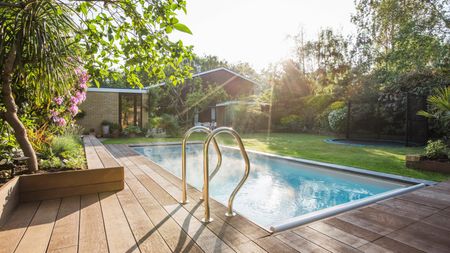 How to fix a green pool fast
How to fix a green pool fastProperly cleaning and shocking your pool will help restore it to its former blue glory, fast. This is what to do to stop a green pool full of algae, spoiling your summer fun
By Anna Cottrell Published
-
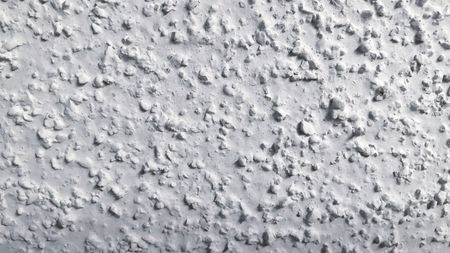 How much does it cost to remove popcorn ceiling?
How much does it cost to remove popcorn ceiling?Are you better off paying a professional or going down the DIY route? Experts share what it costs to remove popcorn ceiling and more budget-friendly alternatives.
By Carol J. Alexander Published
-
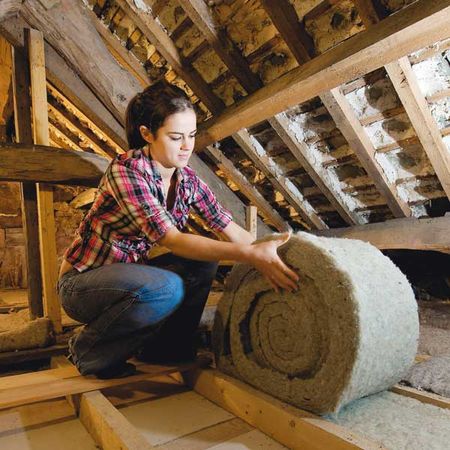 How much does attic insulation cost in 2022?
How much does attic insulation cost in 2022?Want a warmer home and lower energy bills and wondering about attic insulation cost? Get the inside track.
By Sarah Warwick Last updated
-
 Home insulation: where, how and why you should insulate a house
Home insulation: where, how and why you should insulate a houseThe right home insulation will make your home warmer in winter, cooler in summer, and reduce energy bills.
By Sarah Warwick Last updated
-
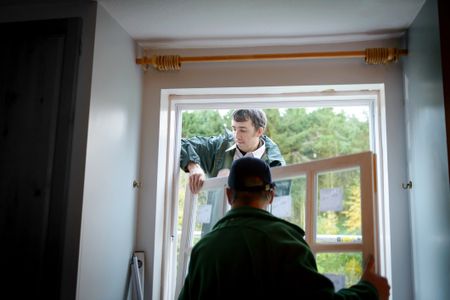 How long do windows last; plus signs it's time to replace yours
How long do windows last; plus signs it's time to replace yoursToday's windows last a long time, but eventually, they'll need replacing. Here's how to know which type of windows last the longest, plus when it's time to replace your windows
By Sal Vaglica Last updated
-
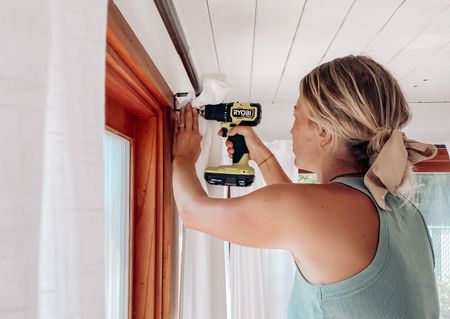 RYOBI ONE+ HP 18V cordless drill and driver review: A toolbox must have for the avid or beginner DIYer
RYOBI ONE+ HP 18V cordless drill and driver review: A toolbox must have for the avid or beginner DIYerThe RYOBI ONE+ HP 18V cordless drill and driver is a convenient, budget-friendly addition to the brand's ONE+ line
By Liz Hartmann Published
-
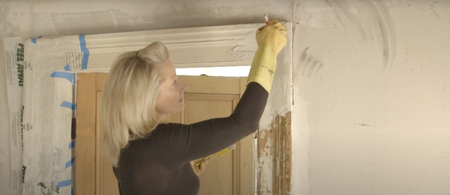 How to remove paint from wood – with or without chemicals, or vinegar
How to remove paint from wood – with or without chemicals, or vinegarYou can remove paint from wood doors, floors, trim and more with or without chemicals and using vinegar to help. Ideal to add a new stain or to revive old woodwork.
By Helaine Clare Last updated
